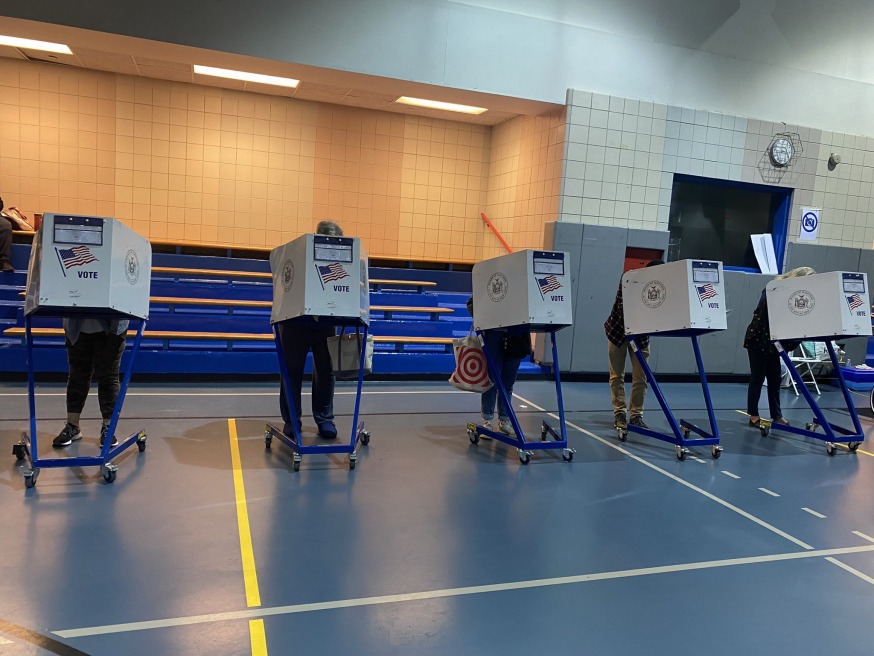
Voters cast their ballots. (NYC Board of Elections)
June 10, 2022 By Christian Murray
The State Assembly district maps drafted earlier this year by the Democratically controlled legislature have been ruled unconstitutional.
State Appellate Judge Susanna Molina Rojas ruled Friday that the Assembly maps were invalid and had to be redrawn, but that the present maps will remain in place for the 2022 races. Therefore, the June 28 primaries and the November general election will go ahead as planned.
The new assembly maps are likely to be drafted for the 2024 races.
Molina Rojas ruled the maps unconstitutional on the same basis that the state senate and congressional maps were tossed out earlier this year.
The Assembly maps, like the senate and congressional maps, were drafted by the state legislature since an Independent Redistricting Commission failed to reach a consensus on the maps.
The creation of the commission stemmed from a constitutional amendment adopted by voters in 2014 to curb political influence in the redistricting process.
The maps were essentially left in the hands of the Democrats, since the legislature is comprised of an Assembly and Senate controlled by Democratic supermajorities. The maps were then signed into law by Gov. Kathy Hochul, a Democrat.
The senate and congressional maps were initially challenged, and a court-appointed special master was assigned to draw up new districts. The assembly maps were not challenged until later.
Molina Rojas, in today’s ruling, has put the task of coming up with the new maps in the hands of the Supreme Court in New York County. She said that it was not feasible for new maps to be drafted in time for the 2022 races as the plaintiffs requested.
“The request for a delay of the 2022 assembly primary elections is denied in any event, because the redrawing and implementing of a new assembly map before a 2022 primary election delayed even until September is, at this late date, no longer feasible,” according to the ruling.
An attorney working on behalf of the plaintiffs celebrated their victory.
“The people of New York voted to have non-partisan lines drawn so that politicians could not gerrymander their districts to maintain their own power,” said Aaron Foldenauer, an Election Attorney who has been litigating the constitutionality of the assembly lines.
“Today, the Court vindicated the rights of New Yorkers to have free and fair elections.”
Nichols v Governor Kathy Hochul 2022 by Queens Post on Scribd
